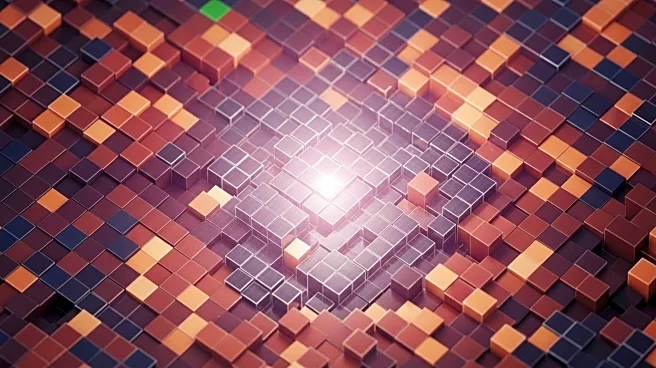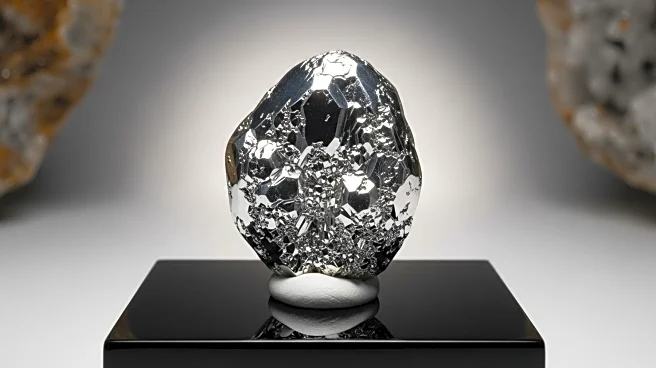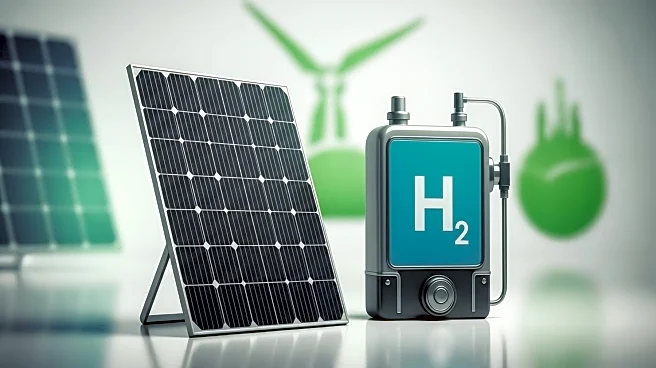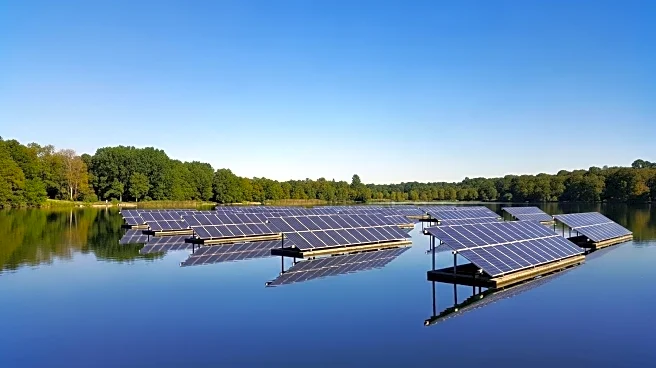What's Happening?
A team of researchers, including Wenjuan Wei, Xiaopeng Zheng, and Hui Huang, have demonstrated the use of all-conjugated block copolymers as dual-function interfacial modifiers in inverted perovskite solar cells (PSCs). These copolymers, synthesized using sequential Grignard metathesis polymerization, contain polyfluorene and either quaternized polyfluorene or polythiophene blocks. They are applied at the perovskite/C60 interface through solution drop-casting and spin-coating, followed by thermal evaporation of C60. The quaternary ammonium halides on the copolymers' side chains help passivate surface defects on the perovskite, while the polyfluorene co-block interacts with the C60 electron-transport layer, creating ordered electronic pathways.
Why It's Important?
The development of these block copolymers is significant for the solar energy industry, as it addresses two critical challenges in perovskite solar cells: charge extraction and long-term stability. By improving these aspects, the research could lead to more efficient and durable solar cells, potentially reducing costs and increasing the adoption of solar technology. This advancement may benefit stakeholders in renewable energy sectors, including manufacturers, consumers, and policymakers focused on sustainable energy solutions.
What's Next?
Further research and development are likely to focus on optimizing the synthesis and application processes of these block copolymers to enhance their effectiveness in real-world applications. Stakeholders in the solar energy industry may explore partnerships or investments to commercialize this technology, while regulatory bodies could consider updating standards to accommodate these advancements.
Beyond the Headlines
The use of block copolymers in solar cells also highlights the growing intersection of chemical synthesis and renewable energy technologies. This development may inspire further interdisciplinary research, potentially leading to breakthroughs in other areas of energy storage and conversion.











